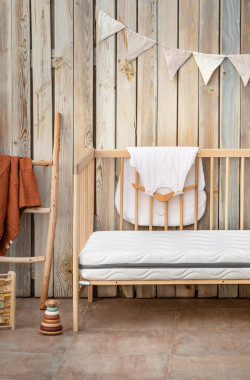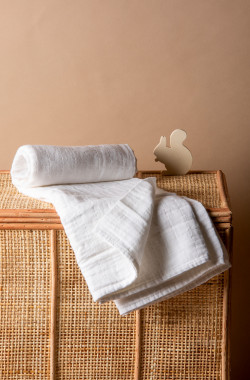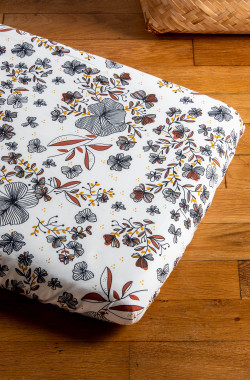
Tips for preparing the nursery for your little one
A perfect bed for baby
As far as sleeping is concerned, the best position is of course on the back, from birth to one year of age. Choose a bed with bars, ideal for air circulation and allowing baby to see through, so he doesn't feel shut in or isolated.
Make sure you don't crowd your baby's bed with toys and cuddly toys - only the cuddly toy is allowed to sleep with him!
Tipi beds are not recommended before the age of 18 months. After this age, however, they can be a good solution for children to acquire a degree of independence. The floor-mounted bed makes it easy for them to get in and out of bed on their own. What's more, Tipi beds can be customized and decorated to create a playful sleeping area.
If you want to decorate the room with a mobile, don't place it directly above your child's head, but rather above his feet, so as not to stimulate him when he's sleeping or resting.
For the mattress, pediatricians recommend a semi-firm density for good support. Make sure it is perfectly adapted to the dimensions of the bed, so that there is no gap between the mattress and the bed structure. Choose mattresses made from natural materials, guaranteed not to be chemically treated, for healthier sleep and without the release of products harmful to baby's health.
Wait until your child is over 18 months old before using a comforter and pillow. For toddlers, opt for a fitted sheet made from natural materials and a sleeping bag that keeps baby's body warm, while leaving him free to move around. Even if he moves around a lot during sleep, he won't risk being uncovered or woken up by the sensation of cold.
To help him fall asleep, it's important to get him used to sleeping in the dark. If he is sometimes afraid of the dark (often around 8-9 months), opt for a small nightlight, but never leave the light on.
By following these tips, you'll create a cosy cocoon for your child and an atmosphere conducive to restful sleep.















